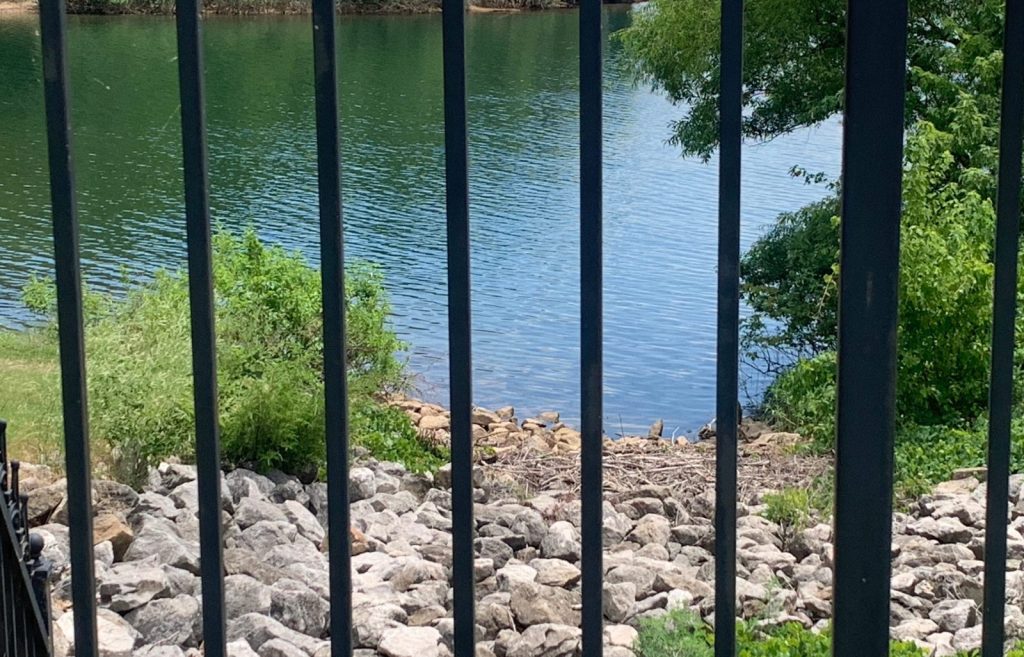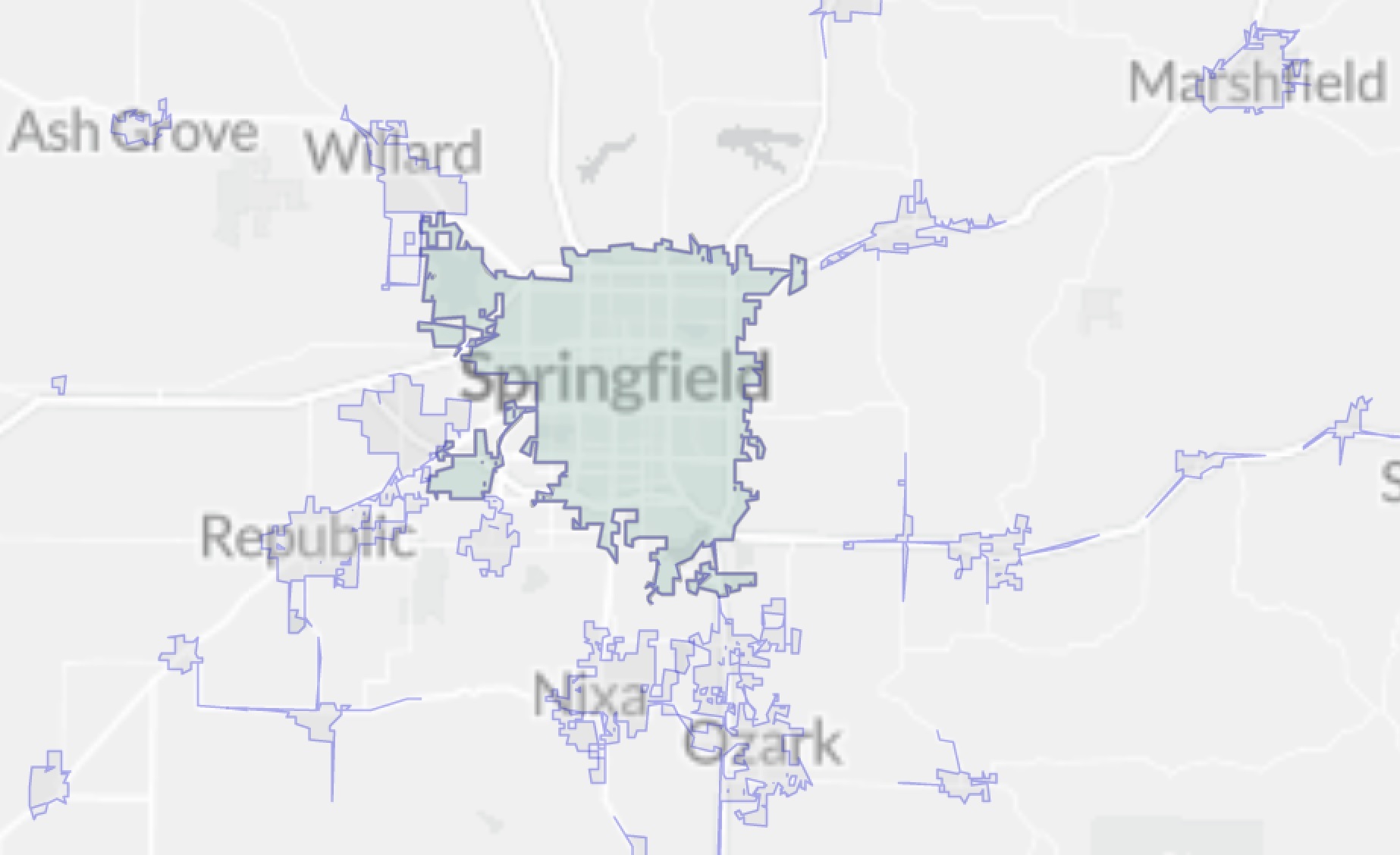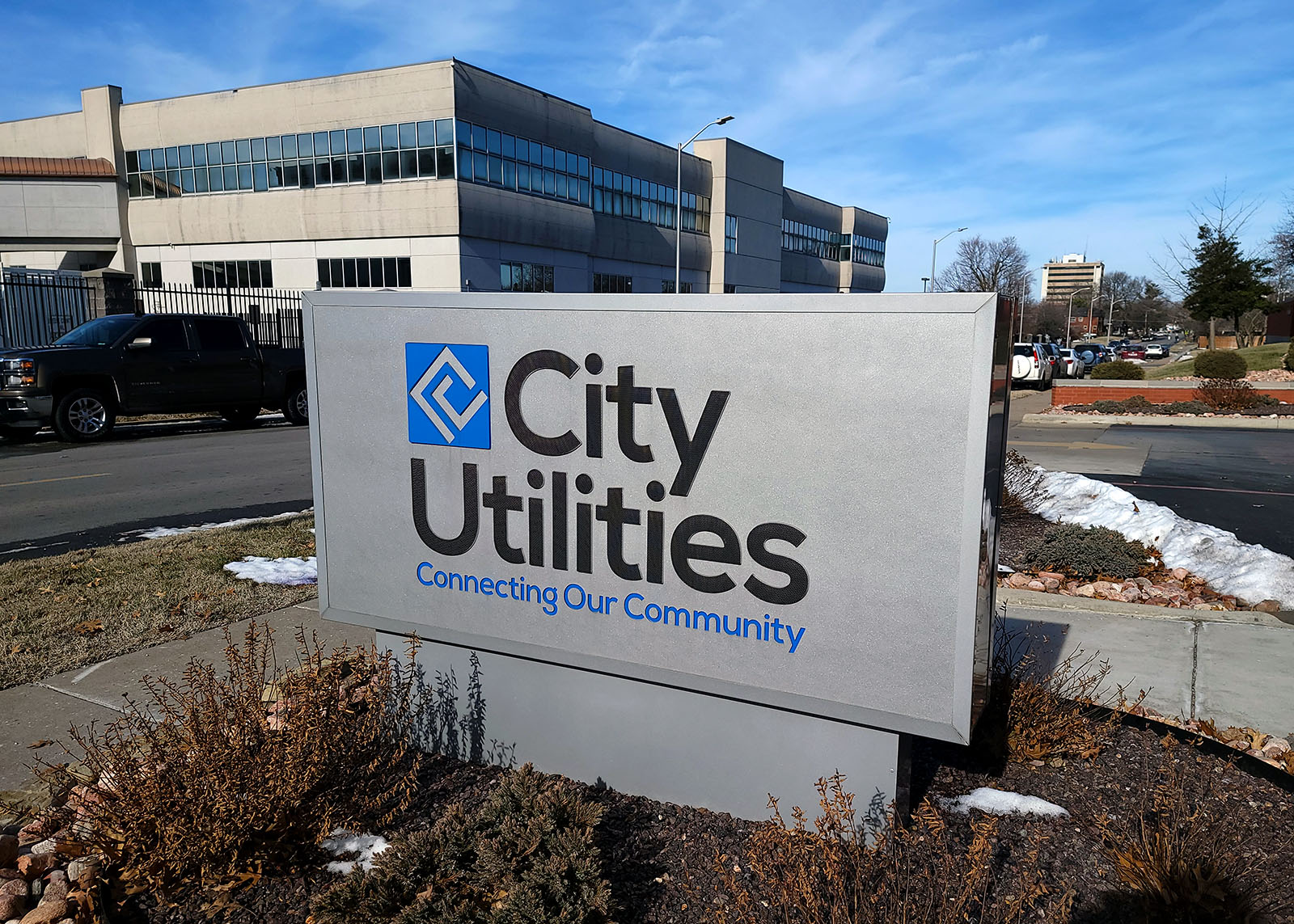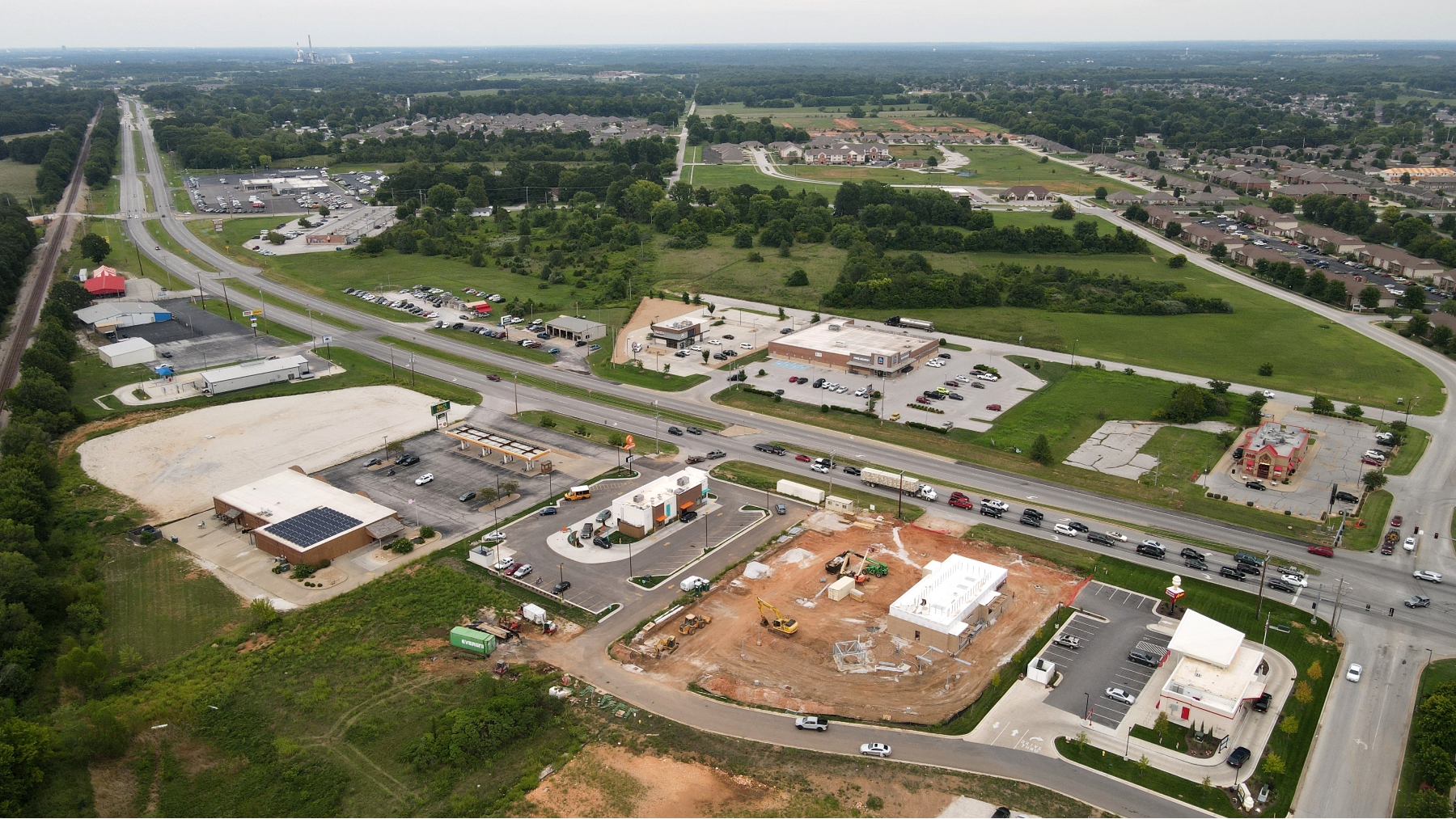IN-DEPTH |
Springfield is sprawling, but there’s only a limited amount of Greene County — and the Queen City’s smaller neighbors are eyeing up land and elbowing each other for room.
For cities, land growth comes by way of annexation, and annexation is something Springfield’s government, business and development leaders have on their minds for the future.
It won’t be land that determines where the final lines on the map will fall, but water.
According to the city of Springfield’s Forward SGF comprehensive plan, annexation affords Springfield opportunities to grow its population, add corridors for development, and later “influence and incentivize” development that aligns with the long-term goals of the Forward SGF plan.
“Annexation can also provide an opportunity to add natural amenities or make necessary transportation connections critical to serve the city and the entire region,” part of the plan document reads.
Property owners would theoretically want to annex into Springfield to access services, avoid surcharges on utilities, and potentially take part in civic engagement and city government activities that benefit them and their community, according to the plan.
‘They're moving where the water is'
Utilities play a crucial role in annexations. U.S. Census data shows the city of Springfield’s population grew by 9,678 people from 2010 to 2020. It’s estimated that 548 people have moved to Springfield from 2020 to 2022. With an average of two persons per household, that’s a gain of about 274 households, or 274 potential utility customers, in two years.
Why care?
Springfield's growth and development will shape the city's future for decades and centuries to come. Springfield's growth in relation to its suburbs will influence the development of all of Southwest Missouri. If you're a customer of Springfield City Utilities, the decisions being made today will shape the services you receive and the rates you pay in the future.
The census data also notes about 5,100 people moved to Springfield from out of state from 2010 to 2020. More recently, the Associated Press highlighted an internal migration in the United States, notably people leaving the West for the South and the Midwest. Missouri is attractive for its low cost of living.

City Utilities President Gary Gibson said Missouri is also known for its water.
“They’re moving to where the water is because there are challenges out West with just not being able to support that growth from an economic development standpoint, or even a residential standpoint,” Gibson said.
Leaders in Springfield look to encourage voluntary annexations to make city limits more uniform. It came to the forefront at a January Springfield City Council meeting, when Councilman Craig Hosmer brought up annexations as part of a larger discussion of utilities.
“It seems like it would make some sense to try to square up those lines,” Hosmer said.
City Manager Jason Gage responded to Hosmer by saying that the comprehensive plan offers guidance for annexations. The approach to annexing land into Springfield varies case by case, depending on how the land is zoned according to Greene County, and whether or not anything is built on the land.
The game of world conquest
In 1995, an episode of “Seinfeld” (Season 6, Episode 12, “The Label Maker”) explored the madness and mania that lines on a map can cause, as Kramer and Newman become engrossed in the board game Risk. Jerry is dragged into their game as a third-party arbitrator.
“It’s Risk, Jerry, the game of world conquest,” Kramer says. “Newman and I are engaged in an epic struggle for world domination. It’s winner take all. People cannot be trusted.”
“Don’t look at me,” Newman responds.
“Oh, I’m looking right at you, big daddy,” Kramer retorts.
In Southwest Missouri, Springfield has assumed the role of Kramer, and Nixa, Ozark, Republic, Willard, Strafford and Battlefield are a pack of Newmans. Hosmer sees the lines on the map, and sees the potential for a real-life struggle for real estate that could have the same consequences as a game of Risk.
“I think the city of Springfield is going to be squeezed by the surrounding municipalities,” Hosmer said. “I think it would make some sense for us to be at least forward thinking to start figuring out where our lines should be for future development, future growth.”
Springfield does have some agreements with other cities, like Republic and Battlefield, where lines have been preemptively drawn on the map to show the limit of how far out Springfield will annex, or where Republic and Battlefield will agree to stop annnexing. As the suburbs grow, Springfield’s leaders are wondering aloud how closely those agreements will be honored, and if it will be cost-effective to uphold old agreements.
If you’ve ever played a start-to-finish game of Risk, you know that the real risk is found in the feelings you’ll develop as the hours pass. Friends will become enraged, family members become incensed, and the next time everyone gathers ‘round the table, intentions may not be pure.

Water's role in the game
In Risk, victory occurs by winning games of chance and probability and by amassing sheer military power. In real-life metro areas, growth and annexation are more nuanced, and there are factors beyond population numbers and rolls of the dice that must be accounted for.
In Risk, players build up armies. In southwest Missouri, cities build water systems. In order to bring new customers in Springfield, City Utilities must have enough water to supply them, and the pipelines to deliver water to the customers.
While water supply and demand could be an issue for Springfield in the future, distribution is usually the deciding factor in whether or not an annexation is practical. As Springfield sprawls southwest, it has to contend with getting water to customers at slightly higher elevations. Much of west Springfield is affected by the valley of Wilson’s Creek, while Republic sits higher at about 1,300 feet above sea level.
Springfield’s elevation generally rises west to east, with a minimum of less than 1,100 feet, and a peak of 1,473 feet.
“The challenges from a growth standpoint, from a utility standpoint, more recently have been more so on the water side as we go to those systems that are now uphill from Springfield,” Gibson said.

In the world of waterworks, sending water uphill is expensive because pump stations and new water storage tanks are costly, Gibson said.
Annexation eliminates competition for Springfield’s municipal water system, thereby guaranteeing a new customer. If a piece of property is inside the city limits of Springfield, it is automatically part of City Utilities’ urban service area. That gives CU the rights to be the utility provider — and utility bill collector — for that property. Other companies, by law, can’t compete and offer utility service inside the city limits.
“The annexation piece is really important as we talk about expanding utility infrastructure,” Gibson said. “If it’s within the city limits, then we have the ability to serve that and keep others out.”
However, if a piece of property is outside the Springfield city limits, City Utilities has to compete against electric cooperatives, like Ozark Electric Cooperative, and/or investor-owned Liberty Utilities, formerly Empire District Electric.

Electricity demand used to plan growth
City Utilities uses data from power consumption over time to plan for growth. The demand for electricity, in terms of kilowatt hours, in Springfield grows at a rate of about 1 percent per year. Gibson said the utility has to prepare to financially meet the demand for more electricity every year.
“If you look at the six pillars of our strategic plan, growth is one of those six pillars,” Gibson said. “People ask, ‘Well, why is growth important to a utility?’ Well, that’s important as we continue to have to put maintenance into the system, it takes costs. If you have more customers and spread that around, it keeps the costs down for everyone.”
That doesn’t mean the number of kilowatt hours needed to power Springfield will continue rising forever. The load on the Springfield power grid is offset in a smaller direction by energy efficiency, Gibson said.
“As customers are becoming more efficient through LED lights or buying new appliances, that kind of offsets what we see from just population growth,” Gibson said.
As of the end of 2022, Springfield City Utilities serves more than 102,000 residential power customers, with the number of kilowatt hours per customer expected to decrease by about 1 percent in 2023. City Utilities also serves about 16,000 commercial customers and 244 industrial power customers.
Like Risk, master planning takes a long time
Utility infrastructure, Gage said, plays a key role in whether or not the city of Springfield can and should annex unincorporated property into the city limits.
“We really felt like you don’t want to get ahead of your new comprehensive plan and the guidance that’s in there,” Gage said.
Gage said it would be a good idea to “spend a few hours,” talking about annexation as it relates to putting guidelines from Forward SGF into practice. Mayor Ken McClure suggested making it a topic for a City Council Tuesday lunch meeting, where the council generally explores a topic over an hour without hearing a bill or taking a vote.

“In light of the comprehensive plan now being adopted with specific ideas thrown out, it might be helpful for such a presentation here,” McClure said.
“When we can work it, let’s talk through that.”
More discussion is likely to happen for the City Council, and possibly for some of the boards and commissions who work with the City Council. It’s likely to be a process that takes months, if not years, to devise more detailed plans for property annexations.
“You can’t implement everything in a 20-year plan at once; we all know that doesn’t make sense,” Gage said.

The real life Republic example
Growth in Ozark and Nixa in the 2000s, and more recent growth in Republic, have Springfield leaders concerned about keeping up with their suburban neighbors.
“We’re seeing Republic explode with growth, and yet in most cases, Springfield — you know, we’re growing, but it’s been somewhat static,” City Councilman Richard Ollis said. “Are we looking to grow our community and be able to expand utility services to areas that are currently not being served?”
According to the U.S. Census Bureau, Republic’s population grew from 14,751 in 2010 to 18,750 in 2020, a 27-percent gain in people. In the same decade, the city of Springfield had a 6 percent population growth rate, and all of Greene County had an 8.6 percent growth rate.
On Aug. 1, 2021, Amazon opened “STL3,” a 1.3 million-square-foot “fulfillment center” on State Route MM in Republic, just south of where Route MM interchanges with James River Freeway.
A new power substation near the Amazon fulfillment center off of U.S. Highway 60 is less than five miles from the power plant. It cost $5 million and was ready in June 2022. City Utilities also built 4.7 miles of 161-kilovolt transmission line from the John Twitty Energy Center to the substation, at a cost of $4.3 million. The construction was the culmination of about 10 years of planning.
“Republic is a great example,” Gibson said. “We were able to get out ahead of that and build a substation and support Amazon and everything. Even though it’s not in the city limits, it’s within our service territory, so that was really a success story.”
The power substation had been planned long before Amazon announced it was coming to town. The northwest part of Republic and Southwest Springfield is one of the fastest-growing areas inside the City Utilities service territory.
Springfield’s annexations over four years
2022
9.5 acres at 1610 North Le Compte Road
26.3 acres at 5100 West State Route EE and Haseltine Road (Greene County Sheriff’s Office and jail)
24 acres at 3224 East Valley Water Mill Road (zoned for retail along U.S. Highway 65)
11.4 acres at 354 West Buena Vista Street
2021
239 acres at 5544 West Chestnut Expressway (Deer Lake Golf Course and Betty and Bobby Allison Sports Town)
25 acres at 5505 West Sunshine Street
98 acres off of State Route FF and West Farm Road 168 (Brody Corners)
2 acres on North Mulroy Road
11.5 acres on South Zimmer Avenue and West Bypass
2020
6.3 acres at 3615 North State Route H/Glenstone Avenue
1.86 acres at 3245 West Sunshine Street
4 acres at 4912 West Chestnut Expressway
10 acres at 851 West Farm Road 182
45 acres at 6177 South Farm Road 189
2019
9.3 acres at 3851 West Farm Road 148

